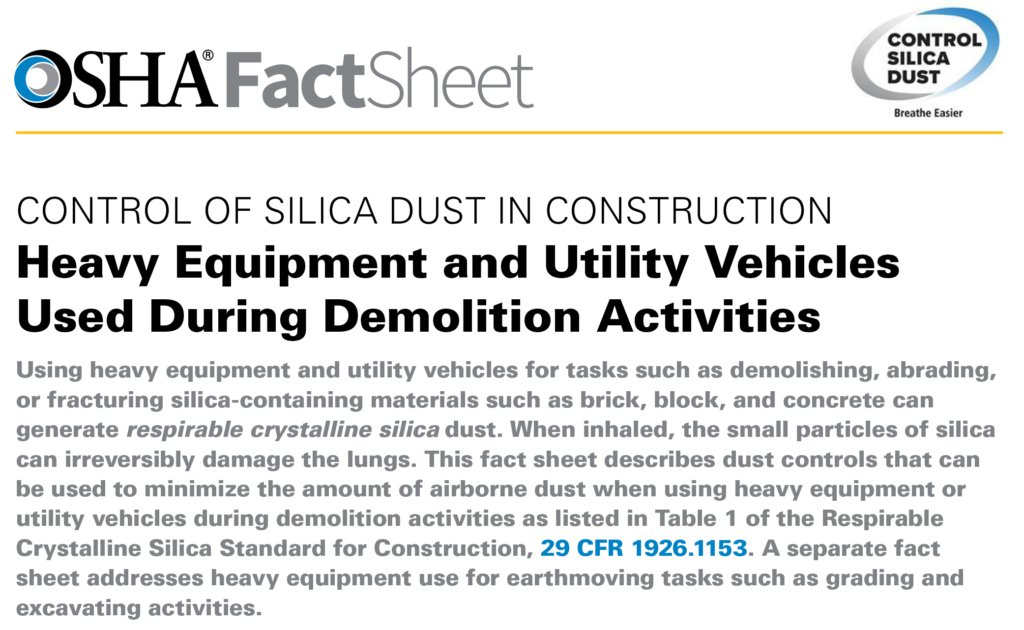HOW PARTICLE SIZES AFFECT COMPLIANCE EFFORTS
One of the more dangerous traits of respirable crystalline silica (RCS) is the extremely small particle size, which allows them to linger when airborne and travel on air currents, even indoors, for long periods of time.
According to the National Institute of Environmental Health Services, the size of dust emissions from silica-containing substances varies from .01 micrometers µm to 100µm in diameter [1].
For perspective, the diameter of the average human hair is about 100µm. Depending on their weight, dust particles must typically be 200µm or smaller to become airborne and linger, while 50µm and smaller particles are invisible to the naked eye.
Particulate matter of ≤10µm (PM10) is the approximate size threshold for particles to be able to penetrate the body's natural defenses (mucus membranes, cilia, etc.) and reach deep into the lungs, potentially causing serious health issues.

Silica dust ranges in size and is characterized by its jagged crystalline form. (Source: Centers for Disease Control and Prevention)

Some of the most harmful airborne particles are too small to see, which complicates silica dust compliance efforts.
Sources
[1] Staff, “Particles: Size Makes All The Difference”, National Institute of Environmental Health Services. Research Triangle Park, NC, 2006. https://www.niehs.nih.gov/health/assets/docs_a_e/ehp_student_edition_lesson_particles_size_makes_all_the_difference.pdf
















